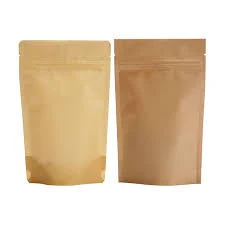- Afrikaans
- Albanian
- Amharic
- Arabic
- Armenian
- Azerbaijani
- Basque
- Belarusian
- Bengali
- Bosnian
- Bulgarian
- Catalan
- Cebuano
- chinese_simplified
- chinese_traditional
- Corsican
- Croatian
- Czech
- Danish
- Dutch
- English
- Esperanto
- Estonian
- Finnish
- French
- Frisian
- Galician
- Georgian
- German
- Greek
- Gujarati
- haitian_creole
- hausa
- hawaiian
- Hebrew
- Hindi
- Miao
- Hungarian
- Icelandic
- igbo
- Indonesian
- irish
- Italian
- Japanese
- Javanese
- Kannada
- kazakh
- Khmer
- Rwandese
- Korean
- Kurdish
- Kyrgyz
- Lao
- Latin
- Latvian
- Lithuanian
- Luxembourgish
- Macedonian
- Malgashi
- Malay
- Malayalam
- Maltese
- Maori
- Marathi
- Mongolian
- Myanmar
- Nepali
- Norwegian
- Norwegian
- Occitan
- Pashto
- Persian
- Polish
- Portuguese
- Punjabi
- Romanian
- Russian
- Samoan
- scottish-gaelic
- Serbian
- Sesotho
- Shona
- Sindhi
- Sinhala
- Slovak
- Slovenian
- Somali
- Spanish
- Sundanese
- Swahili
- Swedish
- Tagalog
- Tajik
- Tamil
- Tatar
- Telugu
- Thai
- Turkish
- Turkmen
- Ukrainian
- Urdu
- Uighur
- Uzbek
- Vietnamese
- Welsh
- Bantu
- Yiddish
- Yoruba
- Zulu
packaging design
The Art of Packaging Design More Than Meets the Eye
In today's fast-paced consumer market, packaging design plays a crucial role in defining a product's identity and appeal. More than just a protective covering, packaging serves as a silent salesperson, communicating the essence of a product and influencing purchasing decisions. Good packaging design merges aesthetics, functionality, and sustainability, creating a synergy that enhances brand perception and consumer experience.
The Importance of First Impressions
First impressions matter, particularly in retail environments where countless products vie for consumer attention. The packaging is often the first interaction a customer has with a brand, making it critical to capture their interest immediately. Bright colors, unique shapes, and innovative designs can create a visual impact that stands out on shelves, prompting consumers to explore further. For instance, brands like Coca-Cola have mastered the art of distinctive packaging through their iconic bottles and labels, making their products easily recognizable worldwide.
Functionality More Than Just Looks
While aesthetics are essential, functionality plays a significant role in effective packaging design. The packaging must safeguard the product during storage and transport while also being easy to open and use for consumers. For example, resealable packages for snacks and perishable items not only extend shelf life but also enhance user convenience. Effective packaging design anticipates consumer needs, ensuring that the product remains intact and usable even after opening.
Moreover, the simplicity of the design can significantly affect user experience. Overly complicated packaging can lead to frustration and potential waste if consumers struggle to access the product. Companies like Apple illustrate the balance between simplicity and elegance in their product packaging, which reinforces their brand promise of innovation and user-friendliness.
Branding and Storytelling Through Packaging
packaging design

Packaging design is a fundamental component of brand identity. Colors, fonts, and imagery communicate brand values and personality instantly. For example, luxury brands often utilize sleek, minimalist designs and high-quality materials to convey exclusivity and elegance, while eco-friendly brands may opt for earthy colors and recyclable materials to highlight their commitment to sustainability.
In recent years, there has been a noticeable trend towards storytelling in packaging, where brands use their packaging as a canvas to narrate their history, mission, or the product's journey. This approach fosters an emotional connection with consumers, making them feel part of the brand's story. For instance, craft beer companies often include illustrations and descriptions on their labels, discussing the brewing process, the inspiration behind the flavor, or local ingredients used, enhancing the overall product experience.
The Push for Sustainability
As environmental concerns become increasingly salient, sustainable packaging has emerged as a critical focus within the industry. Consumers are more environmentally conscious than ever, seeking products that align with their values. Packaging designers are now challenged to create solutions that minimize environmental impact, such as using biodegradable materials, eliminating single-use plastics, or adopting refillable systems.
Brands like Unilever and Procter & Gamble are taking significant strides in this direction, committing to reducing their plastic footprint and incorporating recycled materials into their packaging designs. By embracing sustainability, companies not only appeal to eco-conscious consumers but also contribute to a broader movement towards environmental responsibility.
The Future of Packaging Design
As technology advances, the future of packaging design promises exciting innovations. Developments in materials science may lead to more sustainable and functional packaging options, such as edible packaging or smart packaging that can communicate with consumers via their smartphones. Additionally, augmented reality (AR) could revolutionize how consumers interact with packaging, providing interactive content that enhances product education and engagement.
In conclusion, packaging design is an art form that encompasses aesthetics, functionality, and sustainability. It is a powerful tool that communicates brand identity, enhances consumer experience, and plays an increasingly vital role in addressing environmental challenges. Companies that invest in intelligent and innovative packaging design not only set themselves apart from the competition but also foster lasting relationships with consumers in an evolving market landscape.













